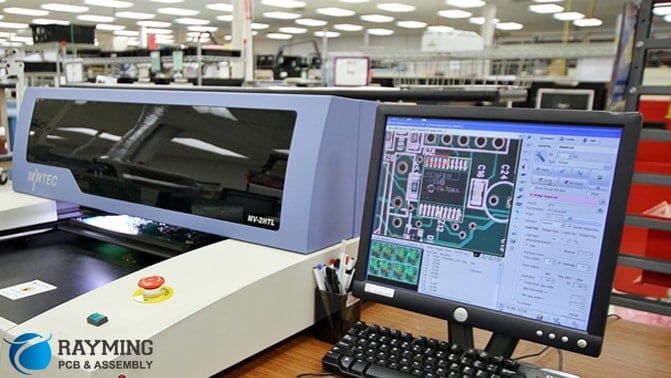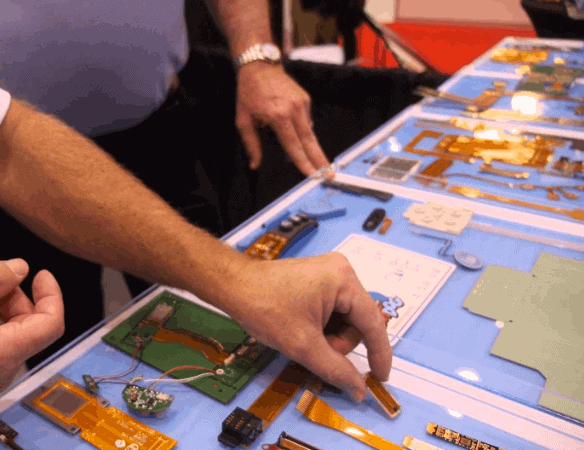Introduction to Circuit Card Assembly
Circuit card assembly (CCA) refers to the manufacturing process of assembling electronic components onto a printed circuit board (PCB). This process involves soldering individual electronic components such as capacitors, resistors, integrated circuits onto the PCB to create a fully functional electronic circuit.
Circuit card assembly is an intricate process that requires expertise and the right set of tools and equipment. Proper circuit card assembly helps ensure the reliability and performance of the end product. This article provides a step-by-step walkthrough of the circuit card assembly process.
Steps in Circuit Card Assembly
The circuit card assembly process typically involves the following key steps:
1. PCB Design and Fabrication
The first step is the design and fabrication of the printed circuit board. PCB design is done using CAD software that allows for the design of the board layout and electrical connections. Once the design is finalized, the PCB fabrication is done where the layout is printed onto the board.
2. Stencil Creation
A stencil is created with cutouts of the component layout on the PCB. This stencil aids in applying solder paste onto the PCB during the assembly process. The stencil is aligned with the PCB before solder paste application.
3. Solder Paste Application
Solder paste containing solder balls and flux is applied onto the PCB using the stencil. The solder paste gets printed onto the PCB through the stencil cutouts matching the component footprint locations. This helps hold components in place temporarily before soldering.
4. Component Placement
Electronic components are then carefully placed onto the PCB according to the circuit design using pick and place machines or manually. Components must align precisely with the solder paste footprint on the board.
5. Reflow Soldering
The board is passed through a reflow oven that melts the solder paste to create solder joints that permanently attach components to the PCB. The solder joints also create electrical connections between components.
6. Conformal Coating
A protective conformal coating may be applied to the assembled PCB to prevent corrosion, leakage currents or dendrite growth. This helps increase the board’s reliability.
7. Testing and Inspection
Testing and inspection of the fully assembled board is conducted to check for manufacturing defects and ensure the board and components function as intended. This may include visual inspection, in-circuit testing, and functional testing.
8. Rework and Repair
If any defects are identified, rework of the board may be done to fix issues such as bridging, open or insufficient solder joints, or misaligned components. Components may also be replaced if needed.
Circuit Card Assembly Tools and Equipment

Some key tools and equipment used in professional circuit card assembly include:
- Soldering irons – Used for soldering components and joints manually
- Reflow ovens – For reflow soldering of SMD components
- Pick and place machines – For automated placement of components on PCBs
- Solder paste printers – To print solder paste on PCBs through a stencil
- Conformal coating systems – For applying protective coatings on assembled PCBs
- Optical inspection systems – For inspecting solder joints and component placement
- ICT testers – For testing electrical connectivity and detecting faults
- Fume extraction systems – For removing harmful fumes produced during soldering
- ESD protection equipment – To prevent damage from electrostatic discharge
Key Factors in Circuit Card Assembly
Some important factors to consider for effective circuit card assembly include:
- Component placement – Components must be accurately placed to match the PCB design
- Soldering – Using the right soldering technique to make robust solder joints
- Process control – Following standardized assembly procedures at each step
- Inspection – Thoroughly inspecting boards between processes to catch defects early
- Operator training – Having well-trained operators to handle assembly processes
- ESD control – Using proper ESD protection equipment for components and PCBs
- Cleanliness – Keeping the assembly environment clean to avoid contamination
- Rework and repair – Having provisions to fix defective boards through rework
Proper control and management of these factors help achieve reliable, high-quality circuit card assembly.
Advantages of Outsourcing Circuit Card Assembly
Many companies are choosing to outsource their circuit card assembly rather than do it in-house. Some benefits of outsourcing CCA include:
- Specialized expertise – Contract manufacturers have specialized assembly experience and engineering resources.
- Latest technology – They invest in the latest soldering equipment, inspection systems, and process control that may be costly for a small in-house setup.
- Flexibility – It’s easier to ramp up or down production as needed with an external assembler.
- Cost savings – No need to spend money on assembly tools, equipment, and labor. Reduces capital investment.
- Focus on core competencies – Companies can focus on design and development rather than assembly operations.
- Faster time-to-market – Getting assistance from experienced assemblers helps bring products to market faster.
When partnering with an EMS provider for circuit card assembly, it’s important to do due diligence in selecting the right partner. Factors to evaluate include their assembly capabilities, expertise, quality systems, costs, and customer service.
Circuit Card Assembly Process Comparison

Here is a comparison of manual assembly vs automated assembly:
| Parameter | Manual Assembly | Automated Assembly |
|---|---|---|
| Process | Components placed and soldered manually | Automated pick-and-place + reflow soldering |
| Speed | Slow, depends on operator skill | Very fast, hundreds of components per hour |
| Accuracy | Prone to human errors | High accuracy and precision |
| Repeatability | Varies based on operator | Extremely repeatable process |
| Volume capacity | Limited to small batches | Ideal for medium to high volumes |
| Cost | Lower equipment investment but higher labor cost | Higher equipment cost but lower labor cost |
| Product Mix | Short changeover times between products | Longer changeover times |
Latest Trends in Circuit Card Assembly
Some emerging trends that are shaping circuit card assembly include:
- Miniaturization – Assembling products with smaller, denser, and more complex PCBs and components.
- Environment-friendly processes – Usage of lead-free soldering, no-clean fluxes and conformal coatings.
- Higher density assembly – Driven by advanced packaging of 01005 and 0201 size surface mount devices.
- Automation and smart manufacturing – Leveraging AI, advanced inspection systems, cobots, etc.
- Flexible and rigid-flex PCBs – Assembly of flexible circuits bending into three-dimensional products.
- Additive manufacturing – 3D printing of PCB substrates and even assembled PCBs through printed electronics.
- Testing and inspection – More sophisticated techniques like 3D inspection, CT scanning, and inline process control.
These trends enable assembling faster, smaller, more functional, and reliable electronic products cost-effectively. Companies need to keep pace with them to stay competitive.
Conclusion
Circuit card assembly is a complex multistep manufacturing process that requires expertise and control at each step to produce a high-quality board assembly. The steps include PCB fabrication, solder paste application, component placement, soldering, conformal coating and testing. Outsourcing assembly to a contract manufacturer can provide significant advantages. Emerging trends like automation, miniaturization and additive manufacturing are transforming circuit card assembly to meet modern requirements. Companies must evolve their assembly practices and work with partners who can provide the latest innovations in technology and processes.
Frequently Asked Questions
Q1: How are surface mount components assembled on a PCB?
Surface mount components are assembled through a reflow soldering process. First solder paste is applied on SMD pads using a stencil. The components are then placed on the paste deposits using pick and place machines. Finally, the board passes through a reflow oven that melts the solder to make joints.
Q2: What is the importance of solder paste in circuit card assembly?
Solder paste plays a key role. It temporarily holds the components in place before soldering. It provides the necessary solder to make the joint after reflow. It contains flux that facilitates solder flow and joint formation. The amount and position of solder paste affect the joint quality.
Q3: What are some key inspection steps during circuit card assembly?
Some key inspection steps are:
- Visual inspection of bare PCBs
- Checking solder paste height, area, position after paste printing
- Optical inspection of placed components for alignment, orientation
- Inspecting reflowed solder joints under microscope
- AOI inspection of fully assembled boards
- Electrical testing like in-circuit test or flying probe test
Q4: How can defects be fixed in a circuit card assembly?
Common assembly defects like missing components, skewed parts, solder bridges or insufficient joints can be fixed through rework. This involves removing the defective component or solder, cleaning up the area, sometimes redressing the joint area with new paste, and then re-assembling the component properly. For unrepairable boards, components may be salvaged and the board scrapped.
Q5: What are some ways to improve quality in circuit card assembly?
Some ways to improve quality are:
- Implementing process control using procedures, checklists at each step
- Operator training on handling techniques and process parameters
- Using automated assembly processes where possible
- Performing in-process inspection at multiple stages
- Monitoring process performance through SPC
- Tracking defect rates and root causing issues
- Having a robust corrective action system



0 Comments